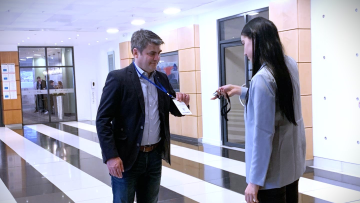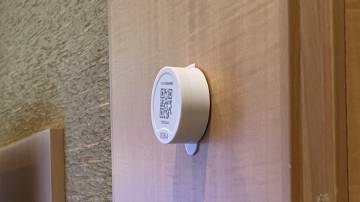The Problem with Session Attendance Scanning

Conferences have a requirement to track delegates’ session attendance.
A number of solutions now track session attendance, from basic manual counting to high tech RFID options.
Yet the favored solution throughout the event world remains badge scanning - a technology that dates back to the eighties. And the reason for its staying power? It’s the least bad option.
Badge scanning is still a go-to solution because organizers have been willing to compromise.
Compromise, because badge scanning is reliant on human operation; usually just a couple of door staff tasked with scanning a room full of People.
More often than not people seeking to enter a room at the same time. People who maybe don’t want to be touched in the lapel area. Or who are simply not within arms length of the scanning staff due to crowds of their peers milling around them, all seeking to enter the same space.
Data Accuracy
A key reason for the badge scanning ‘act’ is to provide an accurate read of attendance numbers at the end of the session. Always for the organizer but often so they can pass it to the sponsor or other stakeholder too. But how can that accuracy be trusted if delegates are missed for the reasons above?
Loss of Control
Sometimes the badge scanning staff themselves may not turn up, may not get briefed properly, may simply not care about fulfilling their brief in an exacting way. Anybody tasked with organizing a conference of any size knows that a stressful part of the build up process is always briefing the temporary staff. It’s due in part to this loss of control. But also trusting your brand experience to relative strangers whose values may not be in sync with your brand.
At its most serious, if temp staff don’t show up at all due to illness for example, all hell can break loose. Situations have been known where session sponsors are prevented from receiving any attendance data at all - because the human didn’t show up to perform that one simple task.
Then there’s the habitual delay for scan data. How long will it take to be produced? Will my team be able to understand and process its format? This shouldn’t be a problem with the availability of options on offer today, and yet, where there’s a third party badge scanning solution involved, it usually is.
Delegate Experience
Switch from organiser to attendee viewpoint and the story does not improve. Badge scanning per se seldom adds value to an attendee’s visit.
Their main focus may be to network with peers, attend a session and generally make the most of their expensive conference ticket. More often than not in B2B ,this could be worth thousands of dollars.
The cumulative effect of scanning - or limited badge scanning staff allocated to a large room of people - is a pinchpoint at the session entrances. This creates queues, which in turn prevent delegates seeing the sessions they paid good money to see. The opposite of a good customer experience and perhaps not in line with the $2,000 ticket price.
We can all appreciate that being scanned in or out of a room can be annoying. At best it interrupts your flow and at worst it interferes with your personal space. Why do we accept being treated in this way?
The answer is delegates don’t accept it. They vote with their feet - or more accurately their post show survey. What starts with polite bemusement ends in poor feedback - or a negatively impacted Net Promoter Score.
The concept of the seamless event experience is now regularly mooted as a desirable objective. Forward thinking organizers already prioritize it above all else. Look at the best attended, highest growth conferences of the last few years. It’s no coincidence that ‘seamless delegate experience’ features as a key differentiator.
Cost Management
We have already highlighted the reasons why badge scanning as an attendee tracking method is ineffective.
But the nub of this ineffectiveness is the budget line needed to pay for the scanning staff. It’s possible that the scanning staff requirement can rise exponentially with the scale of your conference. More delegates seeing more sessions, which in turn require more places to scan with staff available to man them. Staff who need breaks and get tired.
If you could rely on these staff to give accurate data counts that were available when you needed them, that would be something. But as it is, it’s not a good use of budget. When other solutions don’t require any staff to administer them at all, it could also be described as wasteful. When comparing the total solution cost with other alternatives, the cost of badge scanning is astronomical.
Conclusion
Badge scanning for events is yesterday’s technology. A compromise that no longer adds value in today’s world. The outputs are unreliable and the inputs are costly (and unreliable). In some circumstances it can work well, but will involve high staff costs and delay in actually seeing or understanding the data when it arrives. It also risks annoying your customer, causing unwanted contact, queues and delays.
Fortunately alternatives are now at hand, like our event attendee tracking solution. Tailor made for conferences of all sizes, it provides an immediate read on session attendance and dwell time per session. And it’s very easy to set up, requiring only a single electric point and network connection.


